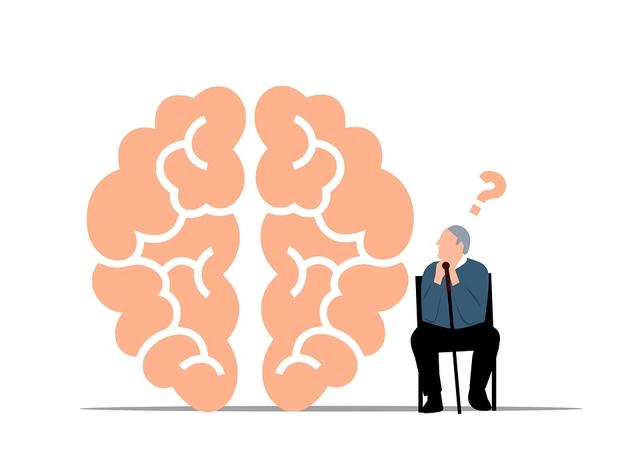Your Cart
Your Cart

Alzheimer’s disease (AD) is the most common form of dementia among older people.
AD accounts for 60-80% of dementia cases. Dementia is a brain disorder that slowly destroys memory and thinking skills, and, eventually, the ability to carry out daily activities.
Unlike other forms of dementia, AD does not affect patients’ motor function until late stages of the disease.
Age is the best-known risk factor for AD. About 1 in 8 people age 65 and over has the disease. Women account for almost two-thirds of Americans with AD.
According to the National Institute of Neurological Disorders and Stroke, AD is a progressive, neurodegenerative disease that occurs when nerve cells in the brain die
The symptoms are mild at first and become more severe over time. It is named after Dr. Alois Alzheimer, who first described the condition in 1906.
As the symptoms worsen, it becomes harder for people to remember recent events, to reason, and to recognize people they know. Eventually, a person with AD may need full-time assistance.
Scientists have not determined a single cause of AD, but they have identified certain risk factors, including:
Age
Family history and certain genes
Abnormal protein deposits in the brain
Other risk and environmental factors
Immune system problems
Just because you lose your keys or forget someone’s name does not mean you have AD. You could have memory loss due to the normal aging process.
However, people with AD display certain ongoing behaviors and symptoms that worsen over time. These can include:
Memory loss affecting daily activities, such as an ability to keep appointments
Trouble with familiar tasks, such as using a microwave
Difficulties with problem-solving
Trouble with speech or writing
Becoming disoriented about times or places
Decreased judgment
Decreased personal hygiene
Mood and personality changes
Withdrawal from friends, family, and community
Symptoms will gradually worsen over time and change according to the stage of the disease.
AD is diagnosed by ruling out other conditions with similar symptoms, which allows for a diagnosis with up to 95 percent accuracy.
At this time, there is no cure for Alzheimer’s disease. The disease progresses as nerve cells in the brain are damaged and can no longer function normally, and there is no way to reverse this deterioration. However, some medications may help keep symptoms from getting worse for a limited time.
Physical exercise and social activity are also important in managing AD, as are proper nutrition, health maintenance, and a calm and well-structured environment.
A person can live with AD for a few years or for a few decades. More often, however, people live with it for about 9 years.
Medications called cholinesterase inhibitors can ease cognitive symptoms, including memory loss, confusion, altered thought processes, and judgment problems.
They improve neural communication across the brain and slow the progress of these symptoms. These are usually the first medications tried, and most people see modest improvements in symptoms.
Three common drugs with Food and Drug Administration (FDA) approval to treat these symptoms of AD are:
Memantine (Namenda), the Exelon patch, and Namzaric (a combination of memantine and donepezil) have been approved to treat moderate to severe AD.
These medications work by regulating neurotransmitters, the chemicals that transmit messages between neurons. They may help reduce symptoms and help with certain behavioral problems.
For example, Namenda may help a person in the later stages of the disease maintain his or her ability to use the bathroom independently for several more months, a benefit for both the person with AD and caregivers.
Notice: The above information is an educational aid only. Always consult your healthcare provider to ensure the information displayed on this page applies to your personal circumstances.